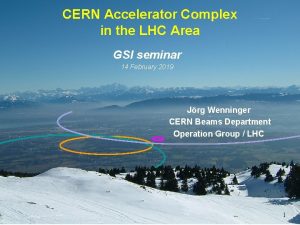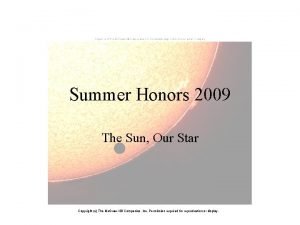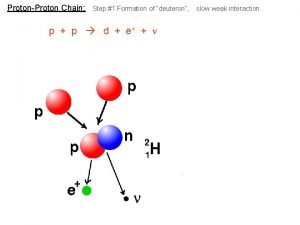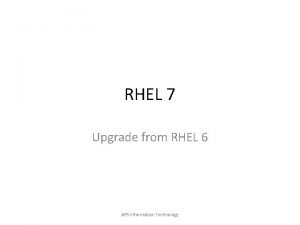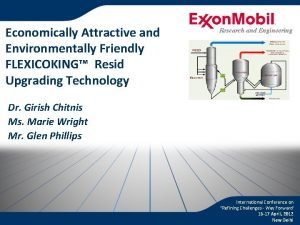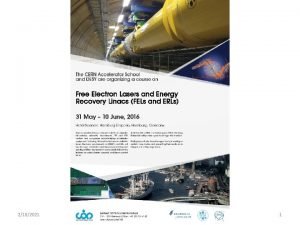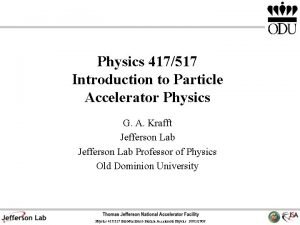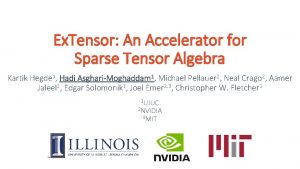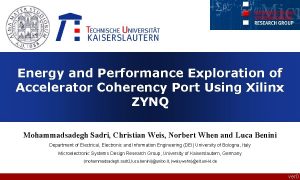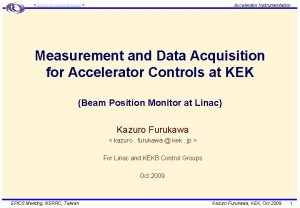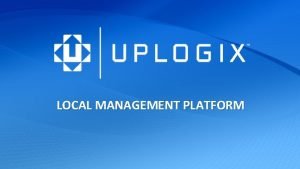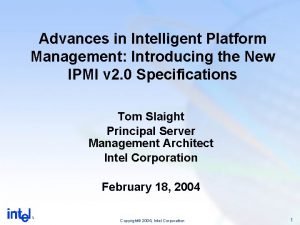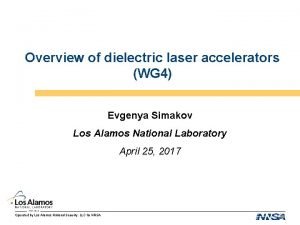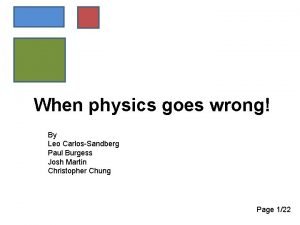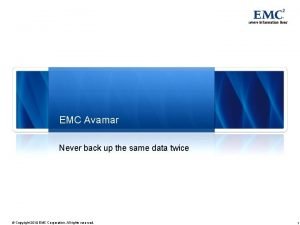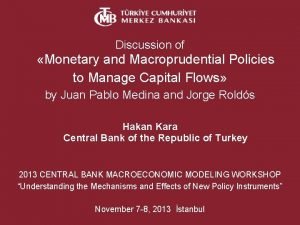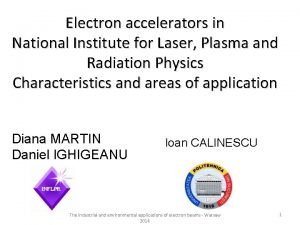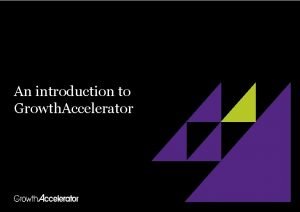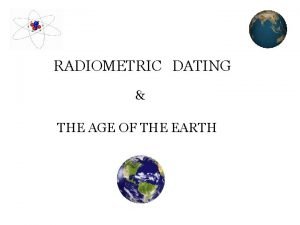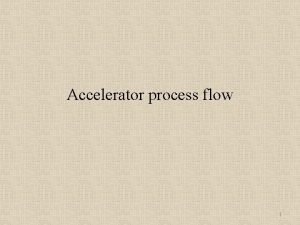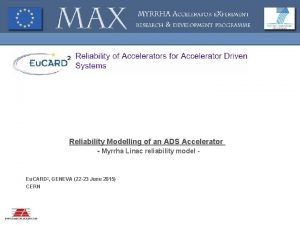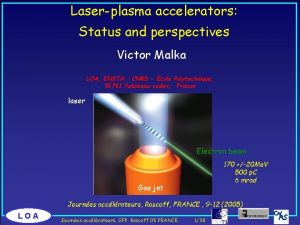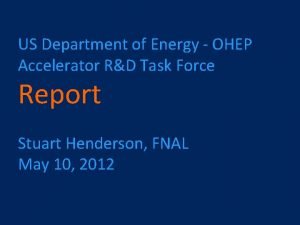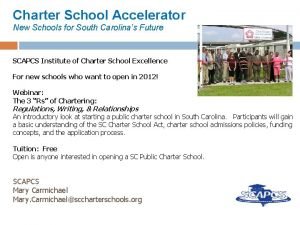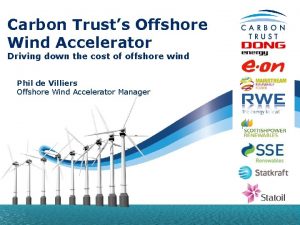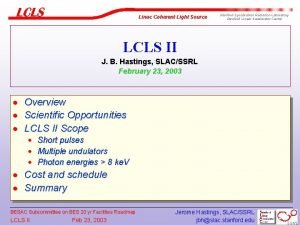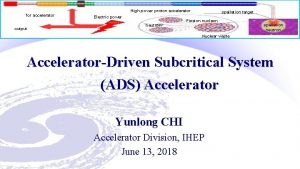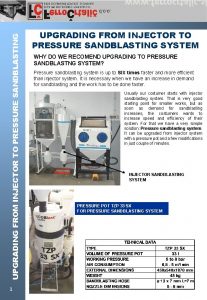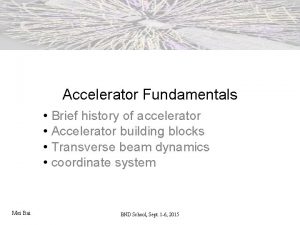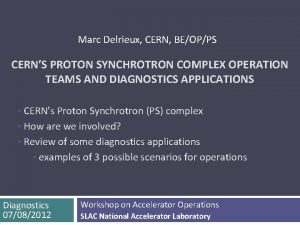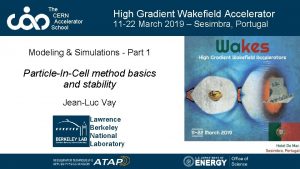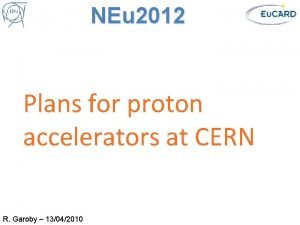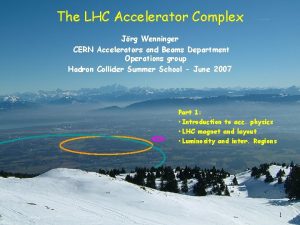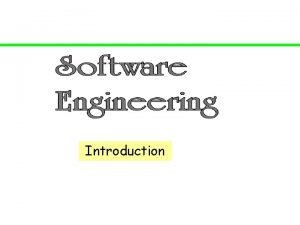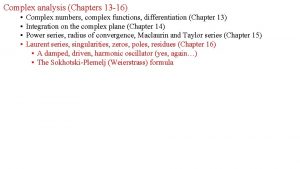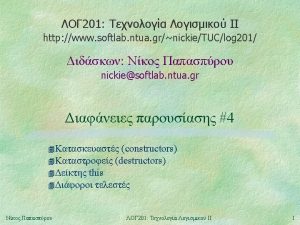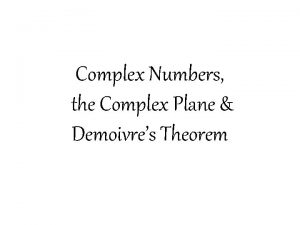Plans for upgrading the CERN proton accelerator complex


![European Strategy Group (1/2) [Quotes from the official statement – July 14, 2006] Þ European Strategy Group (1/2) [Quotes from the official statement – July 14, 2006] Þ](https://slidetodoc.com/presentation_image_h2/1025f3f9390208609af84bbe62caf3d8/image-3.jpg)
![European Strategy Group (2/2) [Quotes from the official statement – July 14, 2006] Þ European Strategy Group (2/2) [Quotes from the official statement – July 14, 2006] Þ](https://slidetodoc.com/presentation_image_h2/1025f3f9390208609af84bbe62caf3d8/image-4.jpg)




![Needs of SLHC parameter symbol transverse emittance e [mm] protons per bunch 25 ns, Needs of SLHC parameter symbol transverse emittance e [mm] protons per bunch 25 ns,](https://slidetodoc.com/presentation_image_h2/1025f3f9390208609af84bbe62caf3d8/image-9.jpg)


![LHC upgrade path Guidelines: economy / reliability / staging / flexibility Stage 1 [2012] LHC upgrade path Guidelines: economy / reliability / staging / flexibility Stage 1 [2012]](https://slidetodoc.com/presentation_image_h2/1025f3f9390208609af84bbe62caf3d8/image-12.jpg)
































- Slides: 44

Plans for upgrading the CERN proton accelerator complex R. Garoby - CERN Content European Strategy for Particle Physics u Upgrade scenarios for the accelerators u Potential of the future accelerators u Roadmap u Summary u R. G. 20 July 2007

Introduction INTRODUCTION R. G. 2 20 July 2007
![European Strategy Group 12 Quotes from the official statement July 14 2006 Þ European Strategy Group (1/2) [Quotes from the official statement – July 14, 2006] Þ](https://slidetodoc.com/presentation_image_h2/1025f3f9390208609af84bbe62caf3d8/image-3.jpg)
European Strategy Group (1/2) [Quotes from the official statement – July 14, 2006] Þ Consolidation and upgrade of injectors Þ LHC upgrade and maximum performance injectors R. G. 3 20 July 2007
![European Strategy Group 22 Quotes from the official statement July 14 2006 Þ European Strategy Group (2/2) [Quotes from the official statement – July 14, 2006] Þ](https://slidetodoc.com/presentation_image_h2/1025f3f9390208609af84bbe62caf3d8/image-4.jpg)
European Strategy Group (2/2) [Quotes from the official statement – July 14, 2006] Þ R & D for LHC upgrade and n facility Þ preparation for n facility R. G. 4 20 July 2007

UPGRADE SCENARIOS FOR THE ACCELERATORS R. G. 5 20 July 2007

CERN accelerator complex R. G. 6 20 July 2007

Physics guidelines (POFPA) 1. LHC n “Maximize the integrated luminosity” Minimize turn-around time by improving reliability / minimizing duration of stops Þ Remove bottle-necks towards ultimate luminosity Þ Refine / select scenario for SLHC (start in ~ 2015); progressive implementation Þ n 2. “Study the possibility of a higher energy LHC” Neutrino physics n Until the physics case is clear (~ 2010 -2012) Pursue development for {b-beam + super-beam} and n factory Þ Depending on physics and outcome of technical developments, elaborate a proposal for a n facility at CERN Þ n After ~2010 Þ 3. Other physics [physics with kaons, muons, heavy-ions (fixedtarget), antiprotons and nuclear physics] l l R. G. Prepare for a n facility at CERN Complement the accelerators resulting from the needs of priorities 1 & 2 Adapt experiments to the capabilities of the accelerators 7 20 July 2007

Today’s performance for LHC Required Obtained Maximum intensity/bunch (at energy (at high energy) ejection) Linac 2 50 Me. V PSB 1. 4 Ge. V ~ ultimate beam 25 Ge. V 1. 5 1011 p/b (~ 90 % of ultimate beam) 450 Ge. V 1. 15 1011 p/b (nominal beam) PS SPS u LHC Nominal Ultimate Limitations* Too low energy Too low injection energy (space charge) u Transition / Impedance ? u Poor longitudinal match with SPS u Reliability (age) u Too low injection energy u e-cloud u Impedance u Too low injection energy (DA, Snap-back) ? u e-cloud ? u 1. 15 × 1011 p/b 1. 70 × 1011 p/b ? ? ? Unexpected beam loss: > 10 % Conclusion – OK for the first phase of operation of LHC, but: • bottleneck for reaching “ultimate” characteristics • major risk of poor reliability due to age and performance stretch R. G. 8 20 July 2007
![Needs of SLHC parameter symbol transverse emittance e mm protons per bunch 25 ns Needs of SLHC parameter symbol transverse emittance e [mm] protons per bunch 25 ns,](https://slidetodoc.com/presentation_image_h2/1025f3f9390208609af84bbe62caf3d8/image-9.jpg)
Needs of SLHC parameter symbol transverse emittance e [mm] protons per bunch 25 ns, small b* 3. 75 Nb [1011] 1. 7 4. 9 bunch spacing Dt [ns] 25 50 beam current I [A] 0. 86 1. 22 Gauss Flat longitudinal profile rms bunch length sz [cm] 7. 55 11. 8 beta* at IP 1&5 b* [m] 0. 08 0. 25 full crossing angle qc [mrad] 0 381 Piwinski parameter f=qcsz/(2*sx*) 0 2. 0 0. 86 0. 99 15. 5 10. 7 294 403 t. L [h] 2. 2 4. 5 Leff [1034 cm-2 s-1] 2. 4 2. 5 Trun, opt [h] 6. 6 9. 5 Leff [1034 cm-2 s-1] 3. 6 3. 5 Trun, opt [h] 4. 6 6. 7 1. 04 (0. 59) 0. 36 (0. 1) hourglass reduction peak luminosity L [1034 cm-2 s-1] peak events per crossing initial lumi lifetime effective luminosity (Tturnaround=10 h) effective luminosity (Tturnaround=5 h) e-c heat SEY=1. 4(1. 3) P [W/m] SR heat load 4. 6 -20 K PSR [W/m] 0. 25 0. 36 image current heat PIC [W/m] 0. 33 0. 78 gas-s. 100 h (10 h) tb Pgas [W/m] 0. 06 (0. 56) 0. 09 (0. 9) extent luminous region sl [cm] 3. 7 5. 3 D 0 + crab (+ Q 0) wire comp. comment R. G. 50 ns, long 9 From F. Zimmermann Two new upgrade scenarios (LUMI’ 06) Compromises between heat load and # pile up events 20 July 2007

Upgrade procedure 1. Lack of reliability: Ageing accelerators (PS is 48 years old !) operating far beyond initial parameters Þ need for new accelerators designed for the needs of SLHC 2. Main performance limitation: Excessive incoherent space charge tune spreads DQSC at injection in the PSB (50 Me. V) and PS (1. 4 Ge. V) because of the high required beam brightness N/e*. Þ need to increase the injection energy in the synchrotrons R. G. • Increase injection energy in the PSB from 50 to 160 Me. V kinetic • Increase injection energy in the PSB from 25 to 50 Ge. V kinetic • Design the PS successor (PS 2) with an acceptable space charge effect for the maximum beam envisaged for SLHC: => injection energy of 4 Ge. V 10 20 July 2007

Upgrade components Proton flux / Beam power 50 Me. V 160 Me. V Output energy 1. 4 Ge. V 26 Ge. V 50 Ge. V 450 Ge. V 1 Te. V 7 Te. V ~ 14 Te. V R. G. Linac 2 Linac 4 PSB LPSPL PS PS 2 SPS+ LHC / SLHC LPSPL: Low Power Superconducting Proton Linac (4 Ge. V) PS 2: High Energy PS (~ 5 to 50 Ge. V – 0. 3 Hz) SPS+: Superconducting SPS (50 to 1000 Ge. V) SLHC: “Superluminosity” LHC (up to 1035 cm-2 s-1) DLHC: “Double energy” LHC (1 to ~14 Te. V) DLHC 11 20 July 2007
![LHC upgrade path Guidelines economy reliability staging flexibility Stage 1 2012 LHC upgrade path Guidelines: economy / reliability / staging / flexibility Stage 1 [2012]](https://slidetodoc.com/presentation_image_h2/1025f3f9390208609af84bbe62caf3d8/image-12.jpg)
LHC upgrade path Guidelines: economy / reliability / staging / flexibility Stage 1 [2012] Main effect Additional benefits u Higher reliability (New Linac 4 accelerators) [160 Me. V, H-] u PSB beam brightness x 2 LHC IR improvement* => ultimate beam in the PS in [Nb. Ti] a single pulse u u Higher reliability (New accelerators) u Adequate beam characteristics for SLHC (4´ 1011 p/b with 25 ns bunch spacing at SPS injection) u Maximum SPS performance (higher injection energy + reduced impedance + lowered SEY) u Higher reliability (New accelerators) u Higher LHC performance ? u LPSPL [4 Ge. V, Low Power] PS 2 2 [~50 Ge. V, PS 2] [2016 ? ] SPS upgrade LHC IR upgrade* [Nb 3 Sn] u 3 New SPS [>500 Ge. V] Easier operation, flexibility u Possibility of > ultimate beam from the PS Shorter injection flat porch in SPS and LHC u Easier operation (minimum RF gymnastics in PS 2) u Potential injector for a new (higher energy) SPS u Flexibility Potential injector for a DLHC u Easier LHC operation * More details in O. Bruning’s talk R. G. 12 20 July 2007

Layout of the new injectors (1/2) SPS PS 2 SPL PS Linac 4 R. G. 13 20 July 2007

Layout of the new injectors (2/2) R. G. 14 20 July 2007

Linac 4 building and infrastructure klystron hall (above ground) accelerating tunnel H- source & RFQ R. G. 15 20 July 2007

Linac 4 and SPL buildings Linac 4 klystron hall SPL tunnel SPL klystron gallery Linac 4 tunnel R. G. 16 20 July 2007

POTENTIAL OF THE FUTURE ACCELERATOR COMPLEX R. G. 17 20 July 2007

Stage 1: Linac 4 (1/3) Linac 4 beam characteristics Ion species Output energy Bunch frequency Max. repetition rate Beam pulse duration Chopping factor (beam on) Source current RFQ output current Linac current Average current during beam pulse Beam power Particles p. pulse Transverse emittance (source) Transverse emittance (linac) R. G. 18 H 160 Me. V 352. 2 MHz 2 Hz 0. 4 ms 62% 80 m. A 70 m. A 64 m. A 40 m. A 5. 1 k. W 1. 0 1014 0. 2 mm mrad 0. 4 mm mrad 20 July 2007

Stage 1: Linac 4 (2/3) Linac 4 structures 3 Me. V H- source RFQ chopper 50 Me. V DTL 102 Me. V 160 Me. V CCDTL PIMS 352. 2 MHz R. G. 19 20 July 2007

Stage 1: Linac 4 (3/3) u Direct benefits of the new linac n Stop of Linac 2: l End of recurrent problems with Linac 2 (vacuum leaks, etc. ) l End of use of obsolete RF triodes (hard to get + expensive) n Higher performance: l Space charge decreased by a factor of 2 in the PSB => potential to double the beam brightness and fill the PS with the LHC beam in a single pulse, => easier handling of high intensity. Potential to double the intensity per pulse. l Low loss injection process (Charge exchange instead of betatron stacking) l High flexibility for painting in the transverse and longitudinal planes (high speed chopper at 3 Me. V in Linac 4) n First step towards the SPL: l Linac 4 will provide beam for commissioning LPSPL + PS 2 without disturbing physics. u Benefits for users of the PSB Good match between space charge limits at injection in the PSB and PS => for LHC, no more long flat bottom at PS injection + shorter flat bottom at SPS injection: easier/ more reliable operation / potential for ultimate beam from the PS n More intensity per pulse available for PSB beam users (ISOLDE) – up to 2´ n More PSB cycles available for other uses than LHC n R. G. 20 20 July 2007

Stage 2: LPSPL + PS 2 (1/4) LPSPL and SPL beam characteristics CDR 2 2 “LPSPL” for SPS & LHC 2’ “SPL” 3. 5 4 50 1. 4 40 0. 57 352. 2 430 4 0. 19 2 1. 2 20 1. 9 352. 2 ~460 5 4 -8 50 1 40 0. 4 352. 2 535 Stage Energy (Ge. V) Beam power (MW) Rep. frequency (Hz) Protons/pulse (x 1014) Av. Pulse current (m. A) Pulse duration (ms) Bunch frequency (MHz) Physical length (m) 3 different designs: CDR 2 (2006) based on 700 MHz high-gradient cavities “LPSPL” for LHC (2007) with low beam power, for the needs of the LHC “SPL” at higher energy, for the needs of neutrino production R. G. 21 20 July 2007

Stage 2: LPSPL + PS 2 (2/4) PS 2 beam characteristics PS 2 Injection energy kinetic (Ge. V) Extraction energy kinetic (Ge. V) Circumference (m) Maximum intensity LHC (25 ns) (p/b) Maximum intensity for fixed target physics (p/p) Maximum energy per beam pulse (k. J) Max ramp rate (T/s) Repetition time at 50 Ge. V (s) Max. effective beam power (k. W) R. G. 22 PS 4. 0 ~ 50 1346 4. 0 x 1011 1. 4 13/25 628 1. 7 x 1011 1. 2 x 1014 3. 3 x 1014 1000 1. 5 ~ 2. 5 70 2. 2 1. 2/2. 4 400 60 20 July 2007

Stage 2: LPSPL + PS 2 (3/4) u Direct benefits of the LPSPL + PS 2 n Stop of PSB and PS: l End of recurrent problems (damaged magnets in the PS, etc. ) l End of maintenance of equipment with multiple layers of modifications l End of operation of old accelerators at their maximum capability l Safer operation at higher proton flux (adequate shielding and collimation) n Higher performance: l Capability to deliver 2. 2´ the ultimate beam for LHC to the SPS => potential to prepare the SPS for supplying the beam required for the SLHC, l Higher injection energy in the SPS + higher intensity and brightness => easier handling of high intensity. Potential to increase the intensity per pulse. u Benefits for users of the LPSPL and PS 2 More than 50 % of the LPSPL pulses will be available (not needed by PS 2) => New nuclear physics experiments – extension of ISOLDE (if no EURISOL)… n Upgraded characteristics of the PS 2 beam wrt the PS (energy and flux) n Potential for a higher proton flux from the SPS n R. G. 23 20 July 2007

Stage 2: LPSPL + PS 2 (4/4) Estimated proton flux at 450 Ge. V for a Gran Sasso n experiment (Nominal flux for CNGS: 4. 5´ 1019 pot/year) From M. Meddahi R. G. 24 20 July 2007

Stage 2’: SPL Upgrade the LPSPL into an SPL (multi- MW beam power at 2 -5 Ge. V): 50 Hz rate with upgraded infrastructure (electricity, water, cryo-plants, …) n 40 m. A beam current by doubling the number of klystrons in the superconducting part n Possible users u EURISOL (2 nd generation ISOL-type RIB facility) => special deflection system(s) out of the SPL into a transfer line => new experimental facility with capability to receive 5 MW beam power => potential of supplying b-unstable isotopes to a b-beam facility… u Neutrino factory => energy upgrade to 5 Ge. V (+70 m of sc accelerating structures) => 2 fixed energy rings for protons (accumulator & compressor) => accelerator complex with target, m capture-cooling-acceleration (20 -50 Ge. V) and storage R. G. 25 20 July 2007

Summary of benefits STAGE 1 2 2’ DESCRIPTION Linac 4 PSB PS SPS Linac 4 LPSPL PS 2 SPS Linac 4 SPL PS 2 SPS + Ultimate beam from PS ++ Maximum SPS performance Higher energy LHC - - - b beam - - ++ (g ~100) n Factory - - +++ (~5 Ge. V prod. beam) k, m - ~200 k. W beam at 50 Ge. V EURISOL - - +++ (new accelerator) Performance of LHC injectors (SLHC) R. G. 26 20 July 2007

ROADMAP R. G. 27 20 July 2007

Planning … 3 Me. V test place ready Linac 4 approval CDR 2 Start for Physics SPL & PS 2 approval R. G. 28 20 July 2007

SUMMARY R. G. 29 20 July 2007

u CERN is soon going to commission the largest and most sophisticated particle accelerator ever built. Such an installation must be fully exploited. Þ It is time to prepare for securing its operation, increasing the reliability of all the infrastructure for protons and ions. Þ It is time to develop solutions for pushing performance to the limit. Þ It is an ideal time to imagine physics experiments that can exploit the potential of the future accelerators. It is even possible to take their specific needs into account… R. G. 30 20 July 2007

REFERENCED SLIDES R. G. 31 20 July 2007

Scenario for accumulation and compression (1/5) Specifications (from R. Palmer’s conclusion at ISS meeting in RAL on Thursday 27, April 2006) Parameter Basic value Range Beam energy [Ge. V] 10 5 - 15 Burst repetition rate [Hz] 50 ? 4 1– 6? ~ 50 40 - 60 16 0. 6 – 16 ? 2 1 -3 Number of bunches per burst (n) Total duration of the burst [ns] Time interval between bunches [ms] (tint) Bunch length [ns] R. G. 32 ~ 50/(n-1) 20 July 2007

Scenario for accumulation and compression (2/5) Accumulation Compression Duratio n = 400 ms SPL beam [42 bunches 21 gaps] Accumulator [120 ns pulses 60 ns gaps] Compressor [120 ns bunch V(h=3) = 4 MV] t = 0 ms t = 12 ms Target [2 ns bunches – 6 times] t = 24 ms t = 36 ms R. G. etc. 33 20 July 2007

Scenario for accumulation and compression (3/5) Accumulator 50. 685 < 0. 02 Mean radius [m] (LA = 74/73 LC) h g 2 T ~ 49 0. 929553 f. REV [MHz] 0 6 VRF [V] Number of bunches Bunch length / gap between bunches [ns] Number of protons per bunches Compressor 50 5. 29 Mean radius [m] (LC = 73/74 LA) g 2 T 0. 942288 3 f. REV [MHz] h. RF 2. 826864 4 f. RF [MHz] VRF [MV] Number of protons per bunches R. G. 120 / 59 1. 7 1013 34 1. 7 1013 20 July 2007

Scenario for accumulation and compression (4/5) Bunch characteristics at injection in the compressor 5 10 Kinetic energy [Ge. V] DETotal [Me. V] lbunch total [ns] at injection Time interval between centres of consecutive bunches [ns] Time interval between transfers [ms] Bunch characteristics at ejection to the target Duration of bunch rotation for 1 bunch [ms] ~ 12 ~ 3 x 12 Number of protons per bunches 1. 7 1013 5 ~ 170 Me. V Kinetic energy [Ge. V] DETotal [Me. V] sbunch [ns] at ejection Time interval between ejection [ms] Number of bunches Duration of full burst to the target [ms] Number of protons per bunches R. G. 120 ~ 354 35 ~ 2 ns ~ 12 6 ~ 60 1. 7 1013 20 July 2007

Scenario for accumulation and compression (5/5) Simulation results (code “ORBIT”) From M. Aiba Transverse phase planes Longitudinal phase plane R. G. 36 20 July 2007

SPARE SLIDES R. G. 37 20 July 2007

CERN plans for 2008 -2011 (1/2) [Endorsed by the CERN Council on June 22, 2007. – Quotes from R. Aymar] R. G. 38 20 July 2007

CERN plans for 2008 -2011 (2/2) [Endorsed by the CERN Council on June 22, 2007. – Quotes from R. Aymar] R. G. 39 20 July 2007

Prospects for 2012 -2016 (1/2) [Endorsed by the CERN Council on June 22, 2007. – Quotes from R. Aymar] R. G. 40 20 July 2007

Prospects for 2012 -2016 (2/2) [Endorsed by the CERN Council on June 22, 2007. – Quotes from R. Aymar] R. G. 41 20 July 2007

Linac 4 project u 2007 n ® mid-2007 l Optimization of the layout on the CERN site l Negotiation of detailed work packages with external partners l CERN Council decision on the « White paper » n July ® September 2007 Site approved. Detailed drawings in progress Progressing ! More news this week … l Finalization of the design (updated design report) l Conclusion on allocation of work packages / distribution of « remaining » tasks inside CERN l Market survey for Civil Engineering n September ® December 2007 l Project review l Project organization inside CERN u January 2008: official start of the Linac 4 project n n u Mid-2010 n u n R. G. Progressive beam commissioning of Linac 4 Mid-2011 n u Start of Civil Engineering Start of construction of Linac 4 equipment PSB stop for modification PSB beam commissioning Beginning 2012: PSB operational for physics with Linac 4 42 20 July 2007

Preparation for the SLHC u ® 2011 for LHC and SPS n n n n u Selection of the most promissing scenarios for the LHC upgrade Experience with the LHC and its practical limitations… Detailed technical design of the LHC upgrade Detailed technical design of the SPS upgrade Prototyping of critical components Detailed estimates of the necessary resources Negotiation with external contributors ® 2011 for the injectors of SPS n n n n Optimization of the layout on the CERN site Optimization of compatibility with other users (EURISOL, n’s, pbars, heavy ions…) Detailed technical design Prototyping of critical components Detailed Civil Enginering drawings Detailed estimates of the necessary resources Negotiation with external contributors ® publication of Technical Design Reports with resources estimates R. G. 43 20 July 2007

Implementation of the LHC luminosity upgrade u 2012 ® 2016 for LHC and SPS n n u 2012 ® 2016 for the injectors of SPS n n n u Construction of SPL and PS 2 Progressive beam commissioning of SPL Beam commissioning of PS 2 2016 n n n R. G. Construction of components for the LHC and SPS upgrade Progressive modification of the SPS (vacuum chamber treatment, impedance reduction etc. ) Connection of PS 2 to SPS & final modifications of the SPS (injection system etc. ) Beam commissioning of the SPS Beam commissioning of the LHC 44 20 July 2007
 Cern accelerator complex
Cern accelerator complex Proton proton chain
Proton proton chain Proton proton chain
Proton proton chain Proton proton chain
Proton proton chain Rhel 6 to 7 upgrade
Rhel 6 to 7 upgrade Flexicoking
Flexicoking Cern accelerator school 2021
Cern accelerator school 2021 Ghon complex and ranke complex
Ghon complex and ranke complex Type a and type b personality theory
Type a and type b personality theory Simple, compound and complex sentences quiz
Simple, compound and complex sentences quiz Freud complexes
Freud complexes Pauline and bruno have a big argument
Pauline and bruno have a big argument Example of freud theory
Example of freud theory Particle accelerator
Particle accelerator Compost accelerator homebase
Compost accelerator homebase Medical particle accelerator
Medical particle accelerator Extensor: an accelerator for sparse tensor algebra
Extensor: an accelerator for sparse tensor algebra Accelerator coherency port
Accelerator coherency port Sap citizen engagement accelerator
Sap citizen engagement accelerator Stanford linear accelerator tours
Stanford linear accelerator tours Accelerator
Accelerator Ccat azure accelerator
Ccat azure accelerator Vmware backup best practices
Vmware backup best practices Biztalk swift
Biztalk swift Intelligent systems corporation
Intelligent systems corporation Dielectric wall accelerator
Dielectric wall accelerator Anatoli bugorski
Anatoli bugorski Skyeits
Skyeits Avamar overview
Avamar overview Financial accelerator
Financial accelerator Dielectric laser accelerator
Dielectric laser accelerator Tca accelerator drops directions
Tca accelerator drops directions Growth accelerator coach
Growth accelerator coach Accelerator mass spectrometry
Accelerator mass spectrometry Netbackup accelerator forced rescan
Netbackup accelerator forced rescan Backup process flow
Backup process flow Leadership accelerator questionnaire
Leadership accelerator questionnaire Ads accelerator
Ads accelerator Loa accelerator
Loa accelerator Sandra biedron
Sandra biedron Mvmc download
Mvmc download Charter network accelerator
Charter network accelerator Offshore wind accelerator
Offshore wind accelerator Project dtf reality kings
Project dtf reality kings Linear accelerator stanford
Linear accelerator stanford
